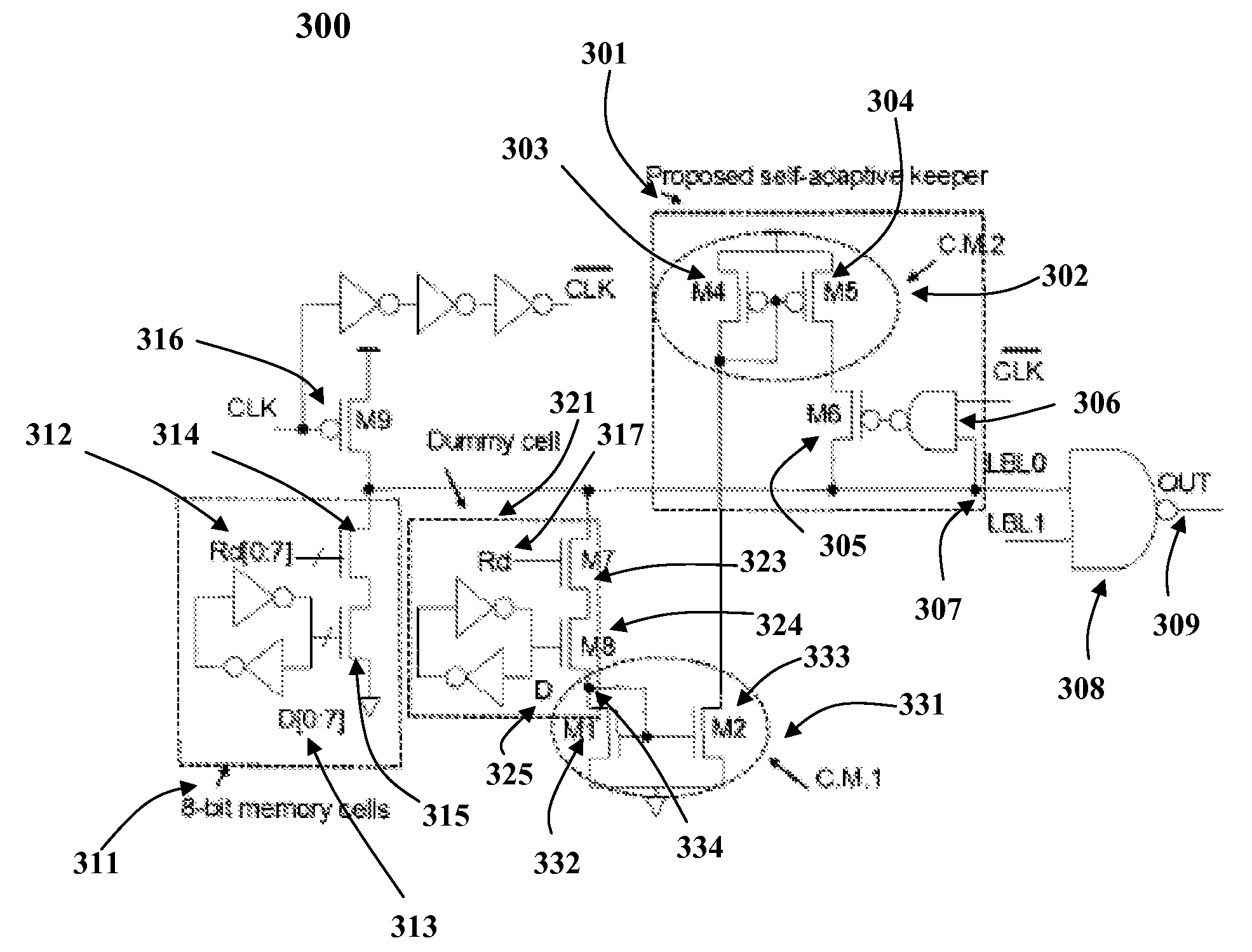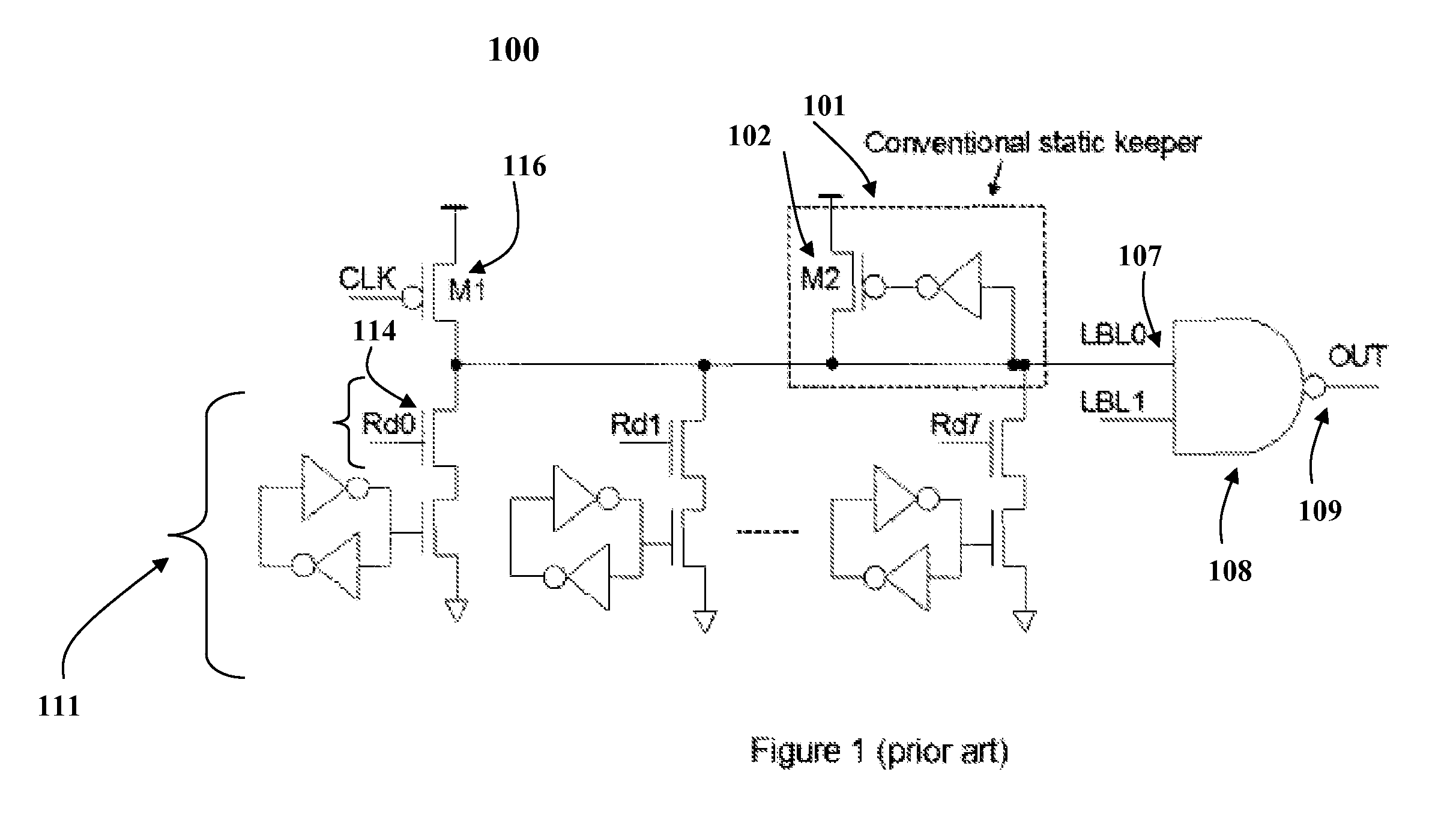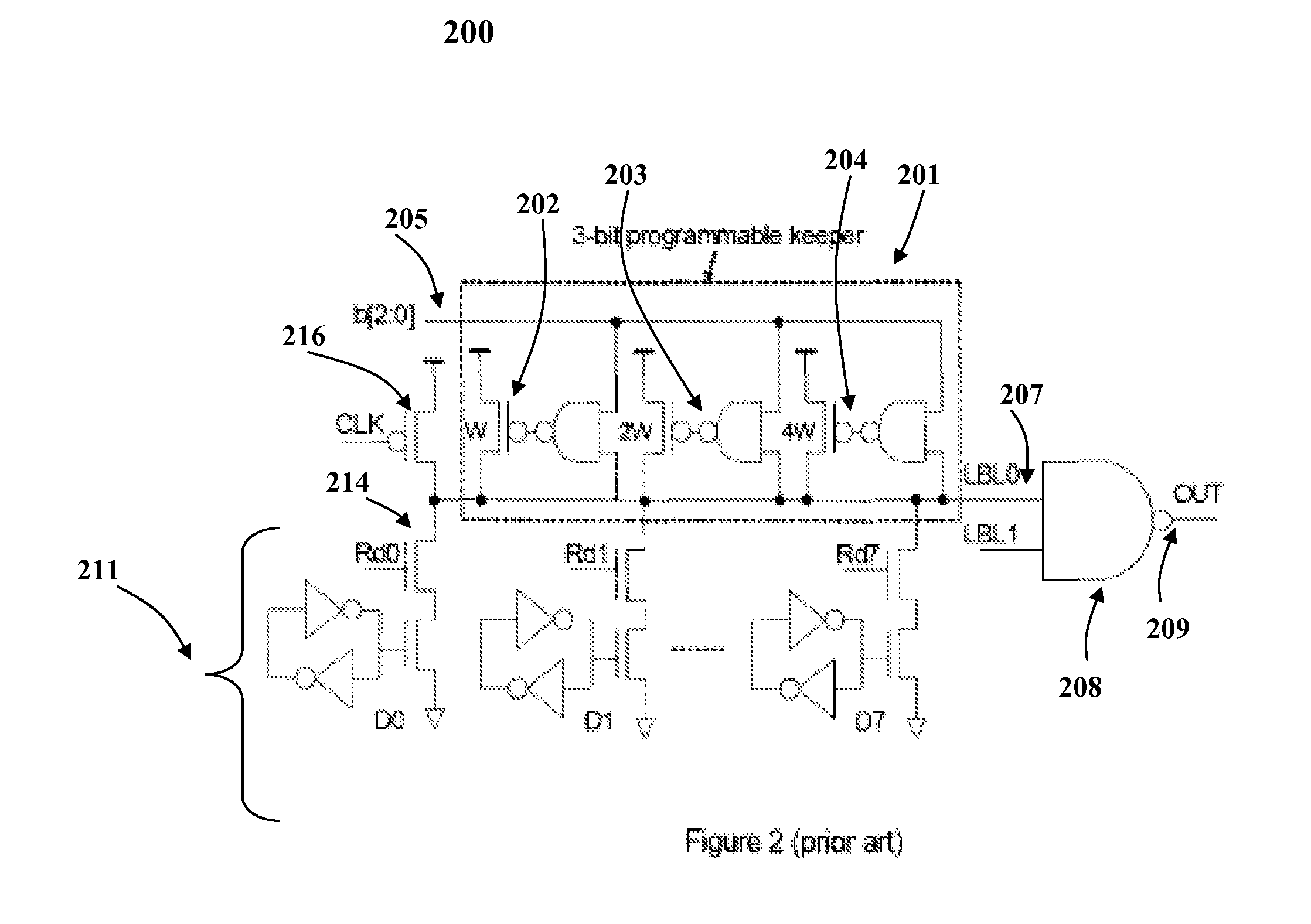Compensation for leakage current variation by the utilization of an automatic self-adaptive keeper
a technology of leakage current variation and automatic self-adaptive keeper, which is applied in the direction of pulse technique, process and machine control, instruments, etc., can solve the problems of reducing the standby time of portable devices, consuming power, and sacrificing too much performance, so as to reduce the leakage effect and achieve optimal current strength
- Summary
- Abstract
- Description
- Claims
- Application Information
AI Technical Summary
Benefits of technology
Problems solved by technology
Method used
Image
Examples
Embodiment Construction
[0014]The present invention provides a method and system for automatically detecting and optimally compensating a wide range of die leakage currents in dynamic circuits. A self-adaptive keeper tracks current leakage and reduces the leakage effects by optimally controlled compensation current. The self-adaptive keeper utilizes a 2-stage embedded current mirror circuit, a dummy cell and a self-adaptive keeper transistor to compensate leakage current. The load impact of the self-adaptive keeper circuitry on static and dynamic circuit components (such as, the impact on memory cells, for example) is minimized by the dummy cell. The dummy cell is essentially a leakage current monitor device, which detects and matches the instant leakage current from the dynamic circuit components. Leakage amplification by the 2-stage current mirror circuit provides an optimal current strength in the keeper transistor. The amplification level is determined by the size of the transistors within the leakage ...
PUM
 Login to View More
Login to View More Abstract
Description
Claims
Application Information
 Login to View More
Login to View More - R&D
- Intellectual Property
- Life Sciences
- Materials
- Tech Scout
- Unparalleled Data Quality
- Higher Quality Content
- 60% Fewer Hallucinations
Browse by: Latest US Patents, China's latest patents, Technical Efficacy Thesaurus, Application Domain, Technology Topic, Popular Technical Reports.
© 2025 PatSnap. All rights reserved.Legal|Privacy policy|Modern Slavery Act Transparency Statement|Sitemap|About US| Contact US: help@patsnap.com



